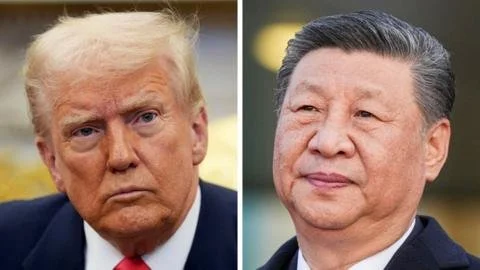Trade Showdown: Trump and China Clash Over Tariff Violations
Tensions are escalating between the US and China as President Donald Trump accuses China of breaching a recently negotiated tariff truce. Earlier this month, both nations had agreed to lower tit-for-tat tariffs following talks in Geneva. However, Trump claimed that China had “totally violated its agreement with us,” without providing specific details. In response, the US Trade Representative, Jamieson Greer, highlighted that China failed to remove certain non-tariff barriers as stipulated in the agreement.
China’s reaction shifted the focus back to the US, as it called on Washington to “cease discriminatory restrictions against China.” The escalating statements from both nations signal a potential recapture of the trade tensions that had previously sparked significant economic ramifications worldwide.
In a recent Truth Social post, Trump stated that the tariffs imposed by his administration had been “devastating” for China, suggesting that he had made a swift deal to prevent a potential economic disaster. Nonetheless, he accused China of violating the agreement they reached, suggesting a breach of trust in the diplomatic efforts made. Greer further remarked that while China responded to tariffs with their own, they also implemented countermeasures that jeopardize compliance.
Concerns about China’s adherence to agreements have grown, as Greer enumerated instances where China has exhibited slow compliance, particularly regarding its own imposed restrictions on US companies, including blacklisting some businesses and limiting exports of critical components like rare earth magnets. Moreover, recent communications from China have repeatedly pointed to the US’s export control measures as aggravating factors in their bilateral trade discussions.
As the world watches, both nations seem committed to ongoing dialogue, with plans for continued talks in the coming weeks. However, Treasury Secretary Scott Bessent acknowledged that trade discussions have encountered a stall, hinting at the need for further involvement from high-ranking officials from both countries to navigate the complexities.
Under the terms of the original deal, tariffs on Chinese imports dropped from 145% to 30%, while tariffs on US goods in China fell from 125% to 10%. Trump maintains that this tariff strategy is crucial for redirecting US consumer purchasing towards American-made products, thereby reinforcing domestic manufacturing and tax revenue.
Despite these high-stakes discussions, an ongoing lawsuit challenging President Trump’s tariff authority has cast doubt on the sustainability of this regime. Recent court rulings perceived to limit Trump’s powers regarding tariff implementation may leave international trading partners hesitant to engage with the US moving forward.

